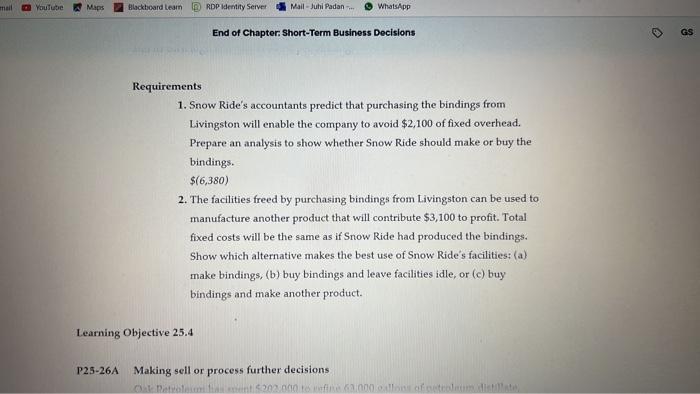Answered step by step
Verified Expert Solution
Question
1 Approved Answer
25A Making outsourcing decisions Snow Ride manufactures snowboards. Its cost of making 1,900 bindings is as follows: Suppose Livingston will sell bindings to Snow Ride



Step by Step Solution
There are 3 Steps involved in it
Step: 1

Get Instant Access to Expert-Tailored Solutions
See step-by-step solutions with expert insights and AI powered tools for academic success
Step: 2

Step: 3

Ace Your Homework with AI
Get the answers you need in no time with our AI-driven, step-by-step assistance
Get Started


